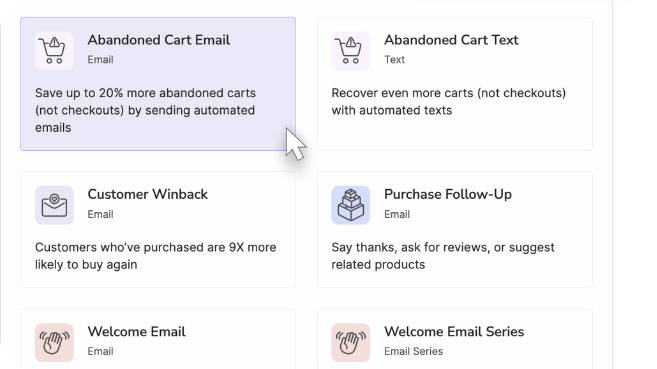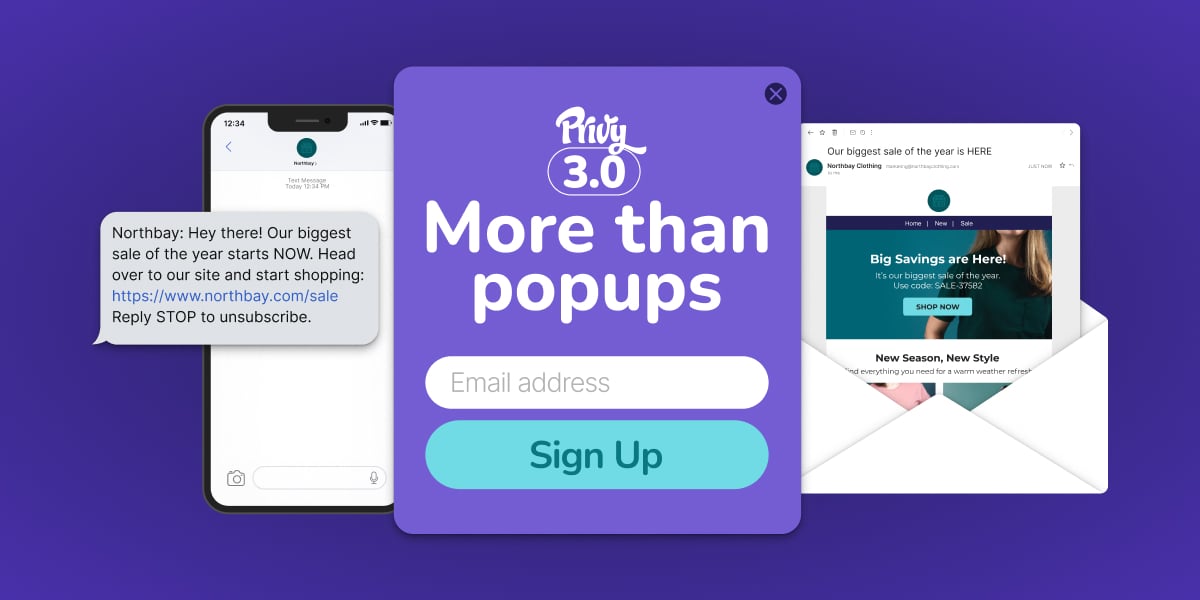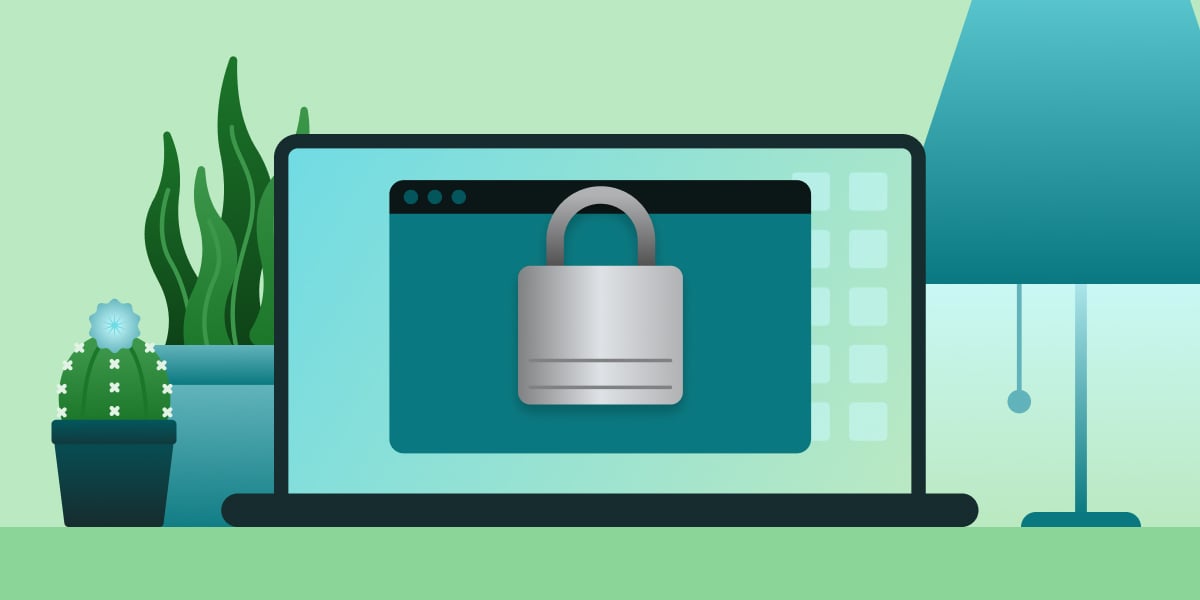How To Take Product Photos Like A Pro [Equipment, Setup & Tips]
13 min read time
Published on Feb 11, 2022
Written by Daniel J. Murphy
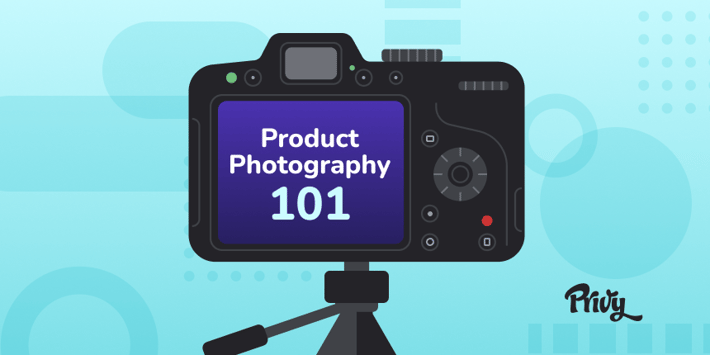
This post was originally published February 6, 2020.
Not long ago, product photography was a pricey headache. Every time retailers needed product shots, they had to pay professionals hundreds or even thousands of dollars.
Today, anyone can take great product photos for their ecommerce website right from their phone. It costs almost nothing, but the payoff is huge: more sales.
Just ask Etsy: they found that 90% of their sales were driven by image quality. The trend makes sense: online shoppers need photos to evaluate products when they can’t see them in person. The higher the photo’s quality, the more confident people will feel about their purchase.
Don’t miss out on sales because of blurry, lackluster photos. This guide has all the product photography tips you need to wow your shoppers and boost your sales.
- Choose the right camera
- Use a tripod
- Learn about lighting
- Use a plain backdrop
- Test multiple camera angles
- Pick the right editing software
Get our best content on ecommerce marketing in your inbox 2 times a week
1. Choose The Right Camera
Good product photos require a good camera. Luckily, today’s smartphones can make novices look like seasoned product photographers. iPhones and Androids are designed to automatically find the best shot, even when the light is low or your camera shakes, making it easy to capture a crisp shot.
You don't need to stress about technical settings like the white balance or ISO. Smartphone product photos can get by with minimal editing and work well for most online stores.
That doesn’t mean digital cameras are out of the picture. With more features than a smartphone, digital cameras give you more control over your product shots. Just be prepared to do your homework. You can’t take advantage of these cameras unless you’ve learned their intricacies.
Check out the recommended smartphones below if your budget and time are limited. We’ll also cover a few beginner DSLR options if you want to invest in a professional camera.
Smartphone
If you’re wondering whether you can use your current smartphone to take product photos, the answer is probably yes. Check to make sure that your phone’s camera has at least 12 megapixels and an autofocus feature (true for most smartphones on the market after 2017).
If yours doesn’t, it’s time to invest in a new phone. Here are a few smartphone recommendations from TechRadar to consider if you want to take excellent photos:
iPhone Pro (model 11 or newer)
- Pros: Consistent color and tonal profiles across the phone’s three lenses.
- Cons: Expensive.
Google Pixel 6
- Pros: Exceptional exposure control – it’s able to show details even in dark, shadowy spots. Ideal for product photography in low lighting.
- Cons: Poor battery life.
Huawei P40 Pro
- Pros: Uses a RYYB (red yellow yellow blue) sensor, not the standard RGB (red green blue) sensor, to capture more light and detail.
- Cons: Inconsistent look across the phone’s three camera lenses. Images are sometimes oversaturated with a purple fringe.
For more smartphone options, check out TechRadar’s full selection of 2022’s best camera phones.
Digital cameras for higher quality product images
If you want to go beyond the quality of a smartphone camera, a digital camera – also known as a digital single-lens reflex camera, or DSLR – is the next step.
Smartphone cameras are nothing short of modern marvels, but they still don’t stack up against the amount of control, detail, and quality you get with a DSLR.
Here are a few entry-level options, along with suggested lenses. These DSLRs have more capabilities than a phone camera but aren’t so advanced that they’re overwhelming for inexperienced photographers.
Nikon D7200 ($1,099.95)
- Pros: Advanced autofocus system. Long battery life.
- Cons: Screen can’t be moved.
Recommended lens: Nikon AF-S NIKKOR 50mm f/1.8G ($219.95)
Canon EOS REBEL T7 ($479)
- Pros: Simple interface. Has a built-in learning system to guide beginners through using the camera.
- Cons: Tiny viewfinder.
Recommended lens: Canon EF 100mm f/2.8L IS USM ($1,299).
For more beginner DSLR suggestions, check out this resource from Fix the Photo.
2. Use a tripod
It doesn’t matter how fancy your camera is – if it isn’t stable, you could end up with a blurry shot.
The solution is a tripod: a three-legged stand that holds your camera in place when you shoot. It’s especially important to use a tripod if you prefer a low ISO – a popular camera setting that reduces graininess (skip to the next paragraph if you don’t want to get technical). A low ISO creates more blur, though, because you have to pair it with a slow shutter speed. Photographers rely on tripods to reduce this blur while still minimizing graininess with a low ISO.
You can buy a tripod for your smartphone or your DSLR camera for around $15 on Amazon.
Ecommerce product photography isn’t Hollywood photography. You don’t need massive cameras and a crew to take high-quality shots. All it takes is a tripod, your phone or DSLR, and products to shoot! But your images can be even better with lighting and a white background.
3. Learn about lighting
Natural lighting is one of life’s great freebies. If the sun’s out and you have a space with windows, you have all of the photography light sources you need. The one downside is that you lack control: you have to shoot during daylight hours, and even if you do, you may have to contend with clouds or light that’s too harsh.
With artificial lighting, you can always create the shot you want, no matter the weather or time of day. It isn’t necessary, but it does ensure you can always take high-quality photos of your products.
Natural light
The first step of lighting is placement. For natural lighting or direct sunlight, that means putting your camera, product, and the window at right angles to each other so that the sun illuminates your product without blinding your camera.
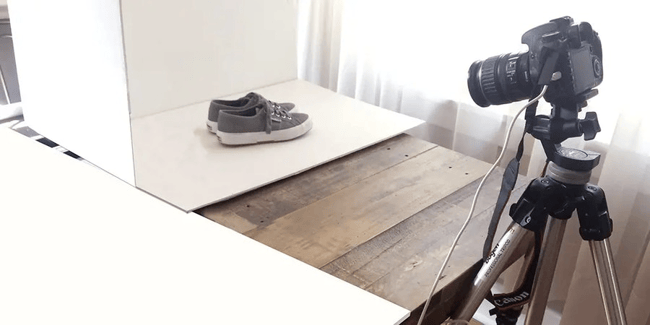 [Source]
[Source]
Now, modify the light using these adjustments:
- If the sunlight is too harsh or creates shadows, place white paper or a sheer white curtain over the window to diffuse the light.
- Turn off your electric lights. Sunlight and electric light have different colors, so use just sunlight to keep your shot consistent.
- If the sun disappears during your photoshoot, use a reflector to intensify the light. You can purchase reflectors on Amazon or make a DIY reflector with a foam board that’s either white or covered with aluminum foil. Aim the reflector at the product until you optimize the lighting.
The key to natural lighting is working with the sun. Instead of waiting for a day when the sunlight is just bright or dim enough, you make modifications until the light is right.
Artificial light
Not everyone wants to play the games natural lighting requires. If you want more control over your shoot, opt for artificial light instead.
All you need is a basic two-light setup to illuminate your product from both sides. You can buy these on Amazon for $69.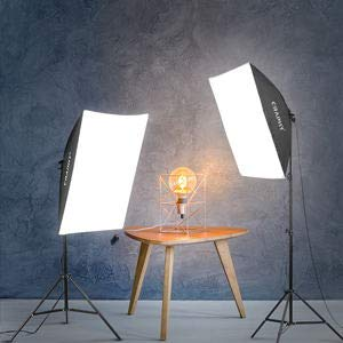
[Source]
Brand photographer Misha Hettie recommends using one light as your key light. “It’s the one you aim directly at the product,” Hettie says. “All you have to do is set it to one side or the other of the camera.”
The other light is your fill light, which goes on the opposite side of the key light. “It’s really just there to pick up where the fill light leaves off, so turn down the intensity or move it further away from the subject,” Hettie says.
If your product has fine edges, like a fur jacket or gemstone jewelry, you may also want to use a third backlight. It’s placed behind and above the product to highlight its surface details. You can buy a three-light setup on Amazon for $139.
Here’s what the artificial lighting setup looks like: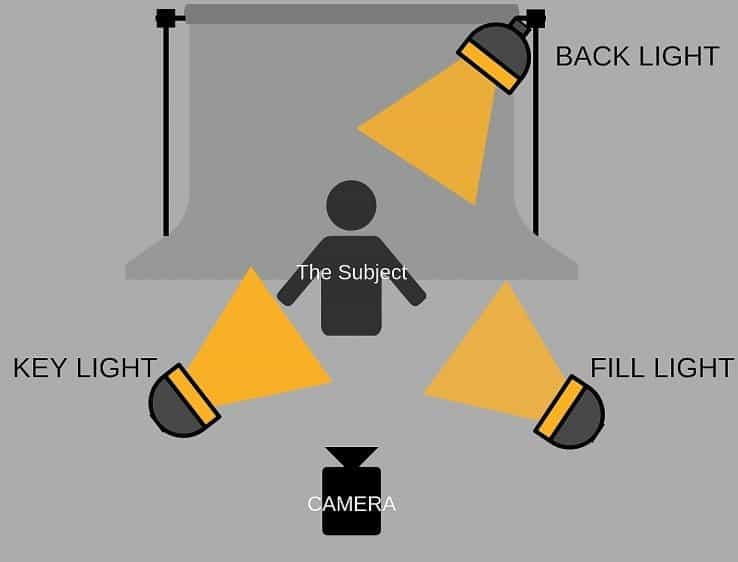
[Source]
4. Use a plain backdrop
There’s a reason why most product photos have a white backdrop: white reflects light back onto the product, so the details are clear. A white background is also easy to retouch in the editing process because it’s a solid color.
To set up a backdrop, you’ll need a “sweep” – something that you can hang white paper from. The sweep you use depends on your product’s size. For small to medium-sized products, you can use a chair or table as your sweep. Large products require a stand-mounted sweep, where the product is placed on the floor.
Chair or table sweep
Shoot small products – no more than a foot or two wide – on a chair sweep. The setup is simple: just fasten white paper to the back of a chair with spring clamps.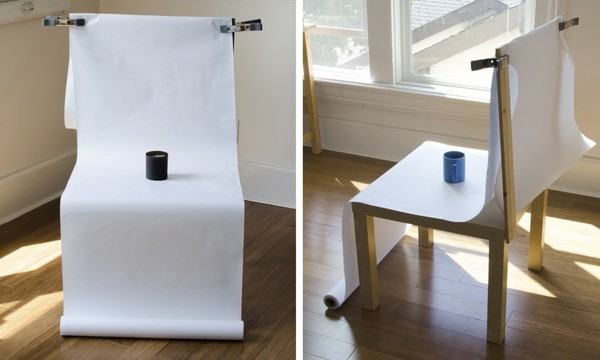
[Source]
A table sweep for medium-sized products is a similar setup. Tape white paper to the wall, let it drape onto the table, and place your product on top.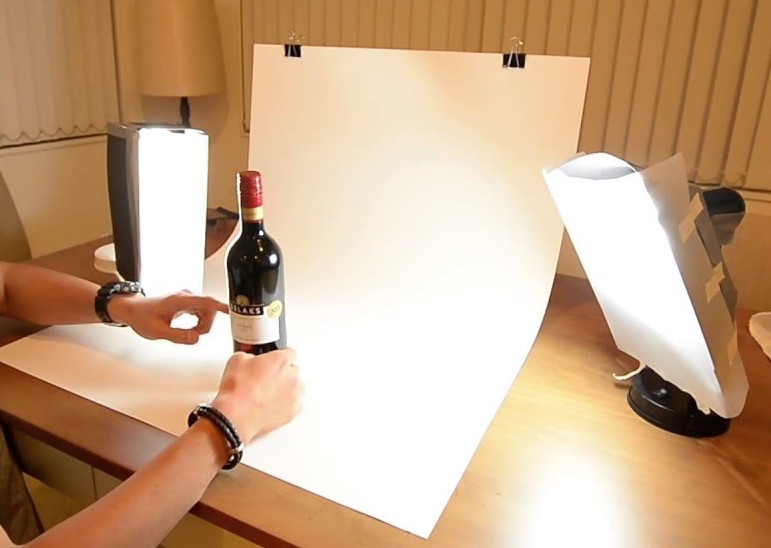
[Source]
If you’re using natural lighting, keep in mind that you’ll need a wall close to a window for your table sweep to work.
The beauty of chair and table sweeps is their simplicity. You can create them in minutes with supplies and furniture you already have.
Stand-mounted sweep
For products that are several feet wide and tall, you’ll need a stand-mounted sweep. The easiest but most expensive option is one that is pre-built. This $145 set from B&H comes with the stand, a roll of paper, and a travel bag.
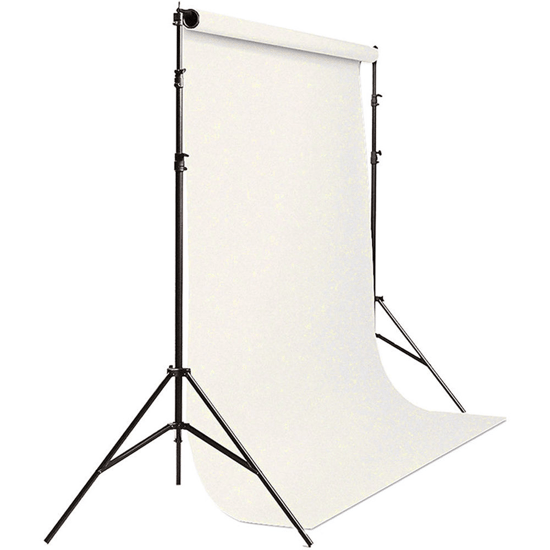 [Source]
[Source]
If you’re shooting products in multiple locations, you’ll save yourself a lot of headaches with this on-the-go backdrop.
If you are planning on shooting in one location and have a small budget, make a DIY backdrop for large products. The New York Institute of Photography suggests hanging a roll of white paper with twine and a hook that can hold at least five pounds and taping the ends of the paper to the floor.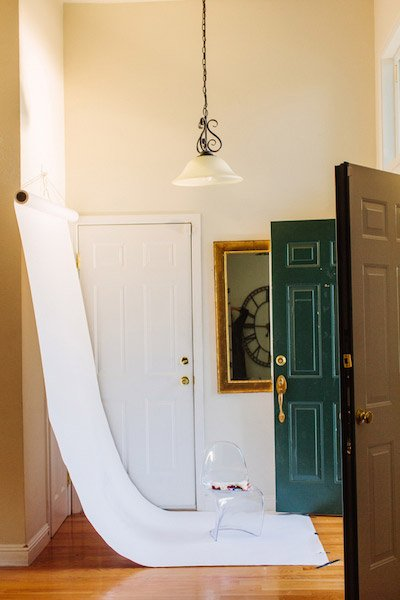
[Source]
Just keep in mind that you need a white wall for this backdrop to work. Otherwise, your wall’s color may appear through the white paper.
It doesn’t take much to create a white backdrop, and that initial investment lasts for years. Even the shortest rolls of white paper are long, around 20 to 30 feet, and you can reuse the paper for multiple shoots.
What’s the cheapest backdrop setup? $40. A standard roll of white background paper costs $37. Hanging tools – tape, clamps, nails, twine – should cost $10 or less.
5. Test multiple camera angles
Taking pictures of your product from different angles ensures you highlight all of the features shoppers might consider before making a purchase. The more views you can give them, the closer you get to replicating a real-life shopping experience.
Here’s how Allbirds uses multiple angles to showcase their shoes. Notice how they use a combination of eye-level, high-angle, and low-angle shots – they even show the shoes on a real person.
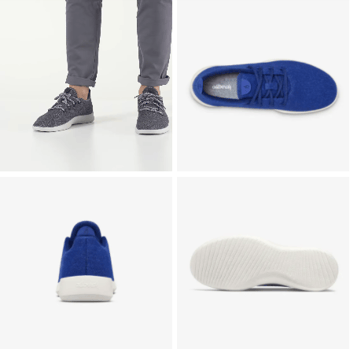
It’s also important to take close-up shots to emphasize the details of your product, like the texture, materials, and other elements that shoppers might not notice in a standard picture.
When you’re taking photos from different angles, it’s best to keep your camera set up in the same spot and rotate your product rather than moving around with your camera. This ensures your shots have consistent framing, saving you time when it comes to editing.
6. Pick the right editing software
The camera, lighting, and backdrop suggestions we’ve covered so far will help you produce high-quality product photos, but they still might not look perfect. Don’t sweat it! There’s free, easy-to-use editing software available to polish your pics before they go live on your ecommerce store and social media platforms.
Fotor
If you’re looking for a basic online photo editor, Fotor is the way to go. The tool allows you to make a number of simple adjustments to your product photos, like changing brightness and saturation. Don’t want to handle any effects? Fotor has a one-tap enhance button that automatically retouches your photo in a click.
As you get more comfortable with photo editing, you may want to try a tool that has more advanced capabilities.
GIMP
GIMP is much more technically advanced than Fotor. Beyond basic editing features, GIMP has Photoshop-level capabilities, such as brushes and layers. Bonus: It’s an open-source tool, so developers are constantly updating it.
A powerful editing software, GIMP requires some getting used to. Get started with these tutorials.
Photoshop (Not free, but worth a mention)
Yes, Photoshop costs $20.99 per month, but we can’t talk about photo editing without mentioning this tool. It’s arguably the most widely used photo-editing software.
Photoshop carries a strong reputation because of its powerful features. Digital Camera World says, “Its support for selections, masks and layers is unmatched.”
Sure, the software is pretty complex, but the company does a good job of guiding new users through the basic features with fly-out animations. It’s definitely not a must-have for product photography, but if you’re looking for the best editing tool out there, Photoshop delivers.
Photo editing apps
If you prefer to edit photos on your phone rather than a computer, there are several photo editing apps you can download. Two of the most popular free apps are Snapseed and Adobe Lightroom, which are both loaded with features to level up your raw photos. Both of these apps are available for iOS and Android devices.
Build your ecommerce photo studio for less than $60
Today, it costs less to set up your own ecommerce photography studio than to hire a professional photographer. And for that small investment, you have a much better shot at attracting customers.
Use this guide to get started with the basics and build a library of awesome product shots. Once you’ve established some confidence, try your hand at more advanced equipment and techniques.
Subscribe for Updates
Get our best content on ecommerce marketing in your inbox 2 times a week.
Written by Daniel J. Murphy
Dan is a B2B marketing leader with over 7 years of experience helping SaaS startups grow. Before joining Privy, Dan was the Director of Product Marketing at Drift. He’s also worked in demand generation, brand marketing and marketing ops. Dan loves to geek out over marketing strategies and technology. He co-authored “This Won’t Scale” with Privy’s CMO, Dave Gerhardt at their previous company.
Subscribe for Updates
Get our best content on ecommerce marketing in your inbox 2 times a week.


.jpg)
